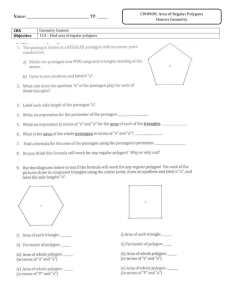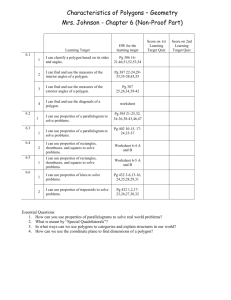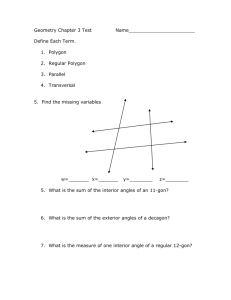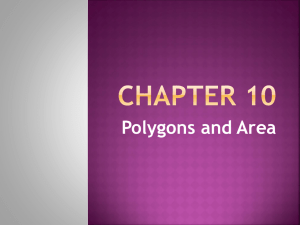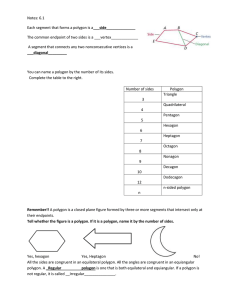1.6 2-D Figures Please see book for examples (pages 56
advertisement
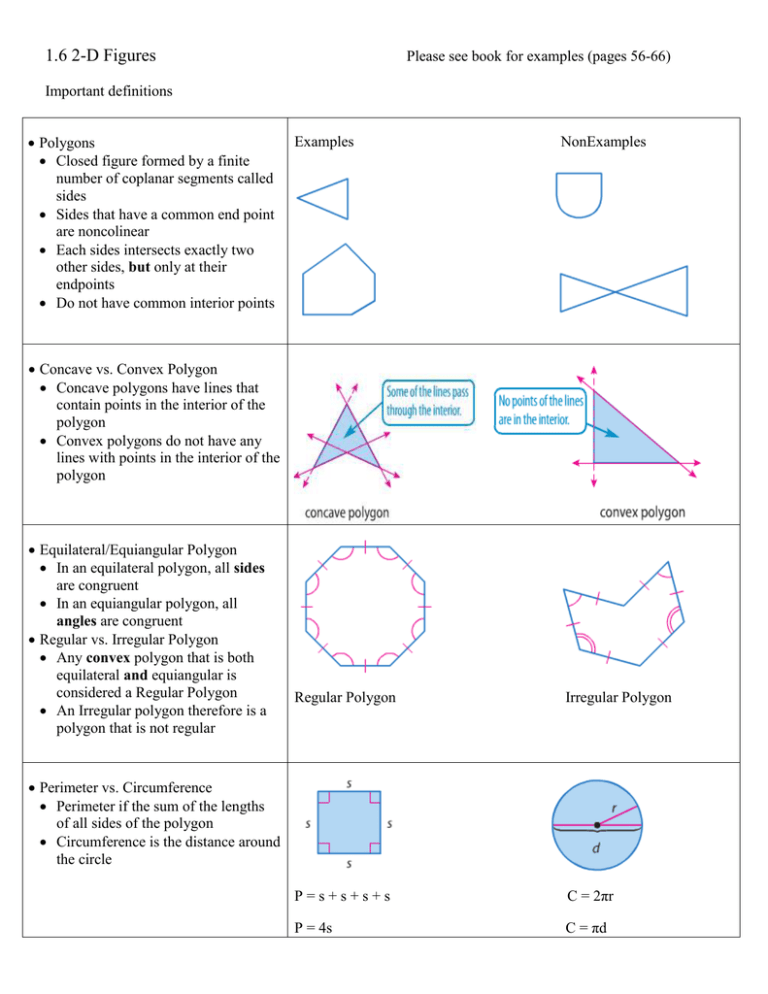
1.6 2-D Figures Please see book for examples (pages 56-66) Important definitions Polygons Closed figure formed by a finite number of coplanar segments called sides Sides that have a common end point are noncolinear Each sides intersects exactly two other sides, but only at their endpoints Do not have common interior points Examples NonExamples Concave vs. Convex Polygon Concave polygons have lines that contain points in the interior of the polygon Convex polygons do not have any lines with points in the interior of the polygon Equilateral/Equiangular Polygon In an equilateral polygon, all sides are congruent In an equiangular polygon, all angles are congruent Regular vs. Irregular Polygon Any convex polygon that is both equilateral and equiangular is considered a Regular Polygon An Irregular polygon therefore is a polygon that is not regular Regular Polygon Irregular Polygon P=s+s+s+s C = 2πr P = 4s C = πd Perimeter vs. Circumference Perimeter if the sum of the lengths of all sides of the polygon Circumference is the distance around the circle Area The number of Square units needed to cover a surface



